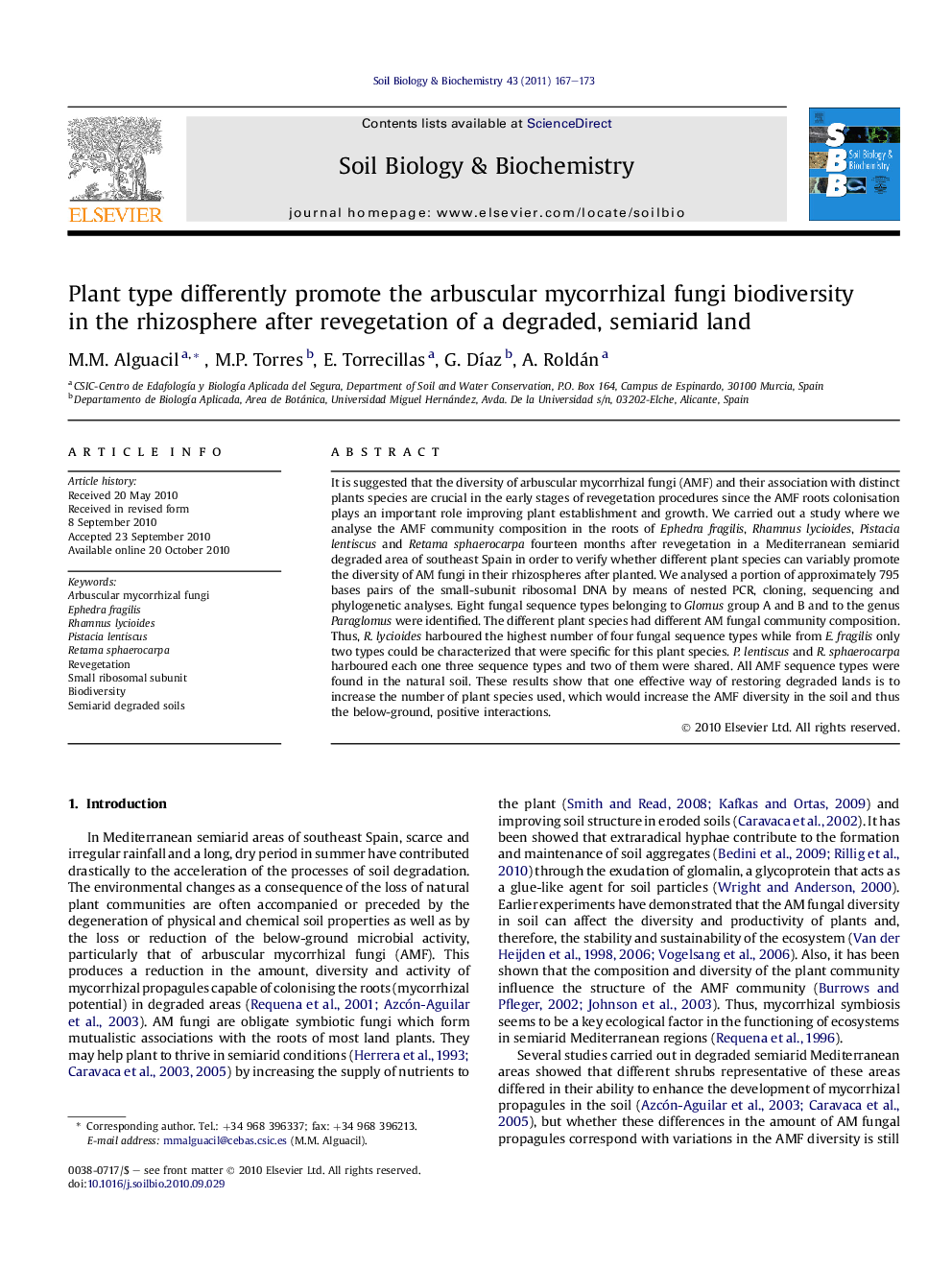| Article ID | Journal | Published Year | Pages | File Type |
|---|---|---|---|---|
| 2025718 | Soil Biology and Biochemistry | 2011 | 7 Pages |
It is suggested that the diversity of arbuscular mycorrhizal fungi (AMF) and their association with distinct plants species are crucial in the early stages of revegetation procedures since the AMF roots colonisation plays an important role improving plant establishment and growth. We carried out a study where we analyse the AMF community composition in the roots of Ephedra fragilis, Rhamnus lycioides, Pistacia lentiscus and Retama sphaerocarpa fourteen months after revegetation in a Mediterranean semiarid degraded area of southeast Spain in order to verify whether different plant species can variably promote the diversity of AM fungi in their rhizospheres after planted. We analysed a portion of approximately 795 bases pairs of the small-subunit ribosomal DNA by means of nested PCR, cloning, sequencing and phylogenetic analyses. Eight fungal sequence types belonging to Glomus group A and B and to the genus Paraglomus were identified. The different plant species had different AM fungal community composition. Thus, R. lycioides harboured the highest number of four fungal sequence types while from E. fragilis only two types could be characterized that were specific for this plant species. P. lentiscus and R. sphaerocarpa harboured each one three sequence types and two of them were shared. All AMF sequence types were found in the natural soil. These results show that one effective way of restoring degraded lands is to increase the number of plant species used, which would increase the AMF diversity in the soil and thus the below-ground, positive interactions.
Research highlights► AMF diversity is strongly dependent on the host plant. ► AMF plays an essential role in the early stages of the plant. ► One effective tool to restore degraded lands is to increase the plant species.
